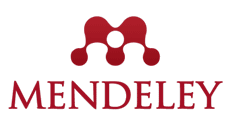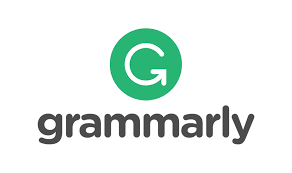Peningkatan motivasi dan hasil belajar matematika pada siswa kelas II melalui model discovery learning
DOI:
https://doi.org/10.57176/jn.v1i1.3Keywords:
hasil belajar, model pembelajaran discovery learning, motivasiAbstract
Penelitian ini dilatarbelakangi oleh rendahnya motivasi dan hasil belajar siswa kelas II SDN Tambakrejo pada mata pelajaran matematika. Penelitian ini bertujuan untuk: 1) mendeskripsikan upaya peningkatan motivasi dan hasil belajar siswa melalui penerapan model pembelajaran discovery learning; 2) meningkatkan motivasi siswa kelas II melalui penerapan model pembelajaran discovery learning; 3) meningkatkan hasil belajar siswa kelas II melalui penerapan model pembelajaran discovery learning. Jenis penelitian ini adalah Penelitian Tindakan Kelas (PTK). Subjek penelitian ini adalah siswa kelas II SDN Tambakrejo tahun pelajaran 2020/2021 yang berjumlah 20 siswa. Objek penelitian ini adalah peningkatan motivasi dan hasil belajar siswa. Instrumen yang digunakan dalam penelitian ini adalah kuesioner dan tes. Teknik analisis data yang digunakan pada penelitian ini adalah deskriptif kuantitatif. Hasil penelitian menunjukkan bahwa: 1) upaya peningkatan motivasi dan hasil belajar siswa telah berhasil di lakukan dengan menggunakan model pembelajaran discovery Learning melalui langkah-langkah sebagai berikut; a) stimulation, b) problem statement, c) data collection, d) data processing, e) verification, f) generalization. 2) Penerapan model pembelajaran discovery learning dapat meningkatkan motivasi siswa. Hal tersebut dapat dilihat dari peningkatan skor rata-rata untuk kondisi awal siswa sebesar 56% (kurang termotivasi), pada siklus I meningkat menjadi 64% (cukup termotivasi), dan pada siklus II meningkat menjadi 73% (termotivasi). 3) penerapan model pembelajaran discovery learning dapat meningkatkan hasil belajar siswa. Hal tersebut dpat dilihat dari peningkatan skor rata-rata kondisi awal sebesar 63,5 (belum tuntas), pada siklus I meningkat menjadi 74,5 (tuntas), dan pada siklus II meningkat menjadi 85 (tuntas).
This research is motivated by the low motivation and learning outcomes of second grade students at SDN Tambakrejo in mathematics. This study aims to: 1) describe efforts to increase student motivation and learning outcomes through the application of discovery learning models; 2) increase the motivation of class II students through the application of the discovery learning model; 3) improve the learning outcomes of class II students through the application of the discovery learning model. This type of research is Classroom Action Research (CAR). The subjects of this study were the second-grade students of SDN Tambakrejo for the academic year 2020/2021, totaling 20 students. The object of this research is to increase students' motivation and learning outcomes. The instruments used in this study were questionnaires and tests. The data analysis technique used in this research is descriptive quantitative. The results showed that: 1) efforts to increase motivation and student learning outcomes have been successfully carried out using the discovery Learning learning model through the following steps; a) Stimulation, b) problem statement, c) data collection, d) data processing, e) verification, f) generalization. 2) the application of the discovery learning model can increase student motivation. This can be seen from the increase in the average score for the initial condition of students by 56% (less motivated), in the first cycle it increased to 64% (quite motivated), and in the second cycle it increased to 73% (motivated). The application of discovery learning learning models can improve student learning outcomes. This can be seen from the increase in the average score of the initial conditions by 63.5 (unfinished), in the first cycle it increased to 74.5 (completed), and in the second cycle it increased to 85 (completed).
References
B. Uno, Hamzah. (2008) Teori Motivasi & Pengukurannya Anailisis Bidang Pendidikan, Jakarta: Universitas Terbuka
Dinn W, Dkk. (2008). Pokok Pengantar Pendidikan, Jakarta: Universitas Terbuka.
Djamarah, Syaiful B. (2002). Psikologi Belajar. Jakarta: Rineka Cipta.
Hamalik, O. (2011). Proses Belajar Mengajar. Jakarta: Bumi Aksara.
I.P Budiariawan. (2019). Hubungan Motivasi Belajar dengan Hasil Belajar pada Mata Pelajaran Kimia. Vol 2. No 2, pp. 103-111. Doi : http://dx.doi.org/10.23887/jpk.v3i2.2124 2
W.Marcila. (2019). Upaya Peningkatan Motivasi dan Hasil belajar Fisika Melalui Penggunaan Model Discovery Learning Berbantuan Lembar Kerja Peserta Didik. Vol 2. No 1. pp.1-8.. Doi : 10.33369/jkf.2.1.1-8
Sardiman. (2011). Interaksi dan Motivasi Belajar Mengajar. Jakarta: Rajawali Pers.
Winataputra, Udin S. Dkk. (2008). Teori Belajar dan Pembelajaran. Jakarta: Universitas Terbuka.
Downloads
Published
How to Cite
Issue
Section
License
Copyright (c) 2021 Farida Nurrokhmah, Apri Damai Sagita Krissandi, Marciana Sarwi

This work is licensed under a Creative Commons Attribution-ShareAlike 4.0 International License.
You are free to:
- Share — copy and redistribute the material in any medium or format for any purpose, even commercially.
- Adapt — remix, transform, and build upon the material for any purpose, even commercially.
- The licensor cannot revoke these freedoms as long as you follow the license terms.
Under the following terms:
- Attribution — You must give appropriate credit , provide a link to the license, and indicate if changes were made . You may do so in any reasonable manner, but not in any way that suggests the licensor endorses you or your use.
- ShareAlike — If you remix, transform, or build upon the material, you must distribute your contributions under the same license as the original.
- No additional restrictions — You may not apply legal terms or technological measures that legally restrict others from doing anything the license permits.
Notices:
You do not have to comply with the license for elements of the material in the public domain or where your use is permitted by an applicable exception or limitation .
No warranties are given. The license may not give you all of the permissions necessary for your intended use. For example, other rights such as publicity, privacy, or moral rights may limit how you use the material.
















